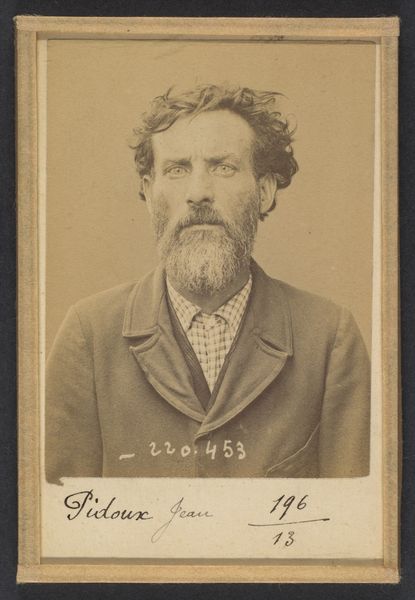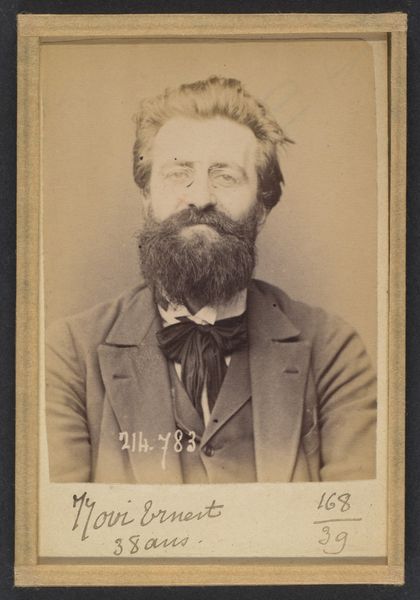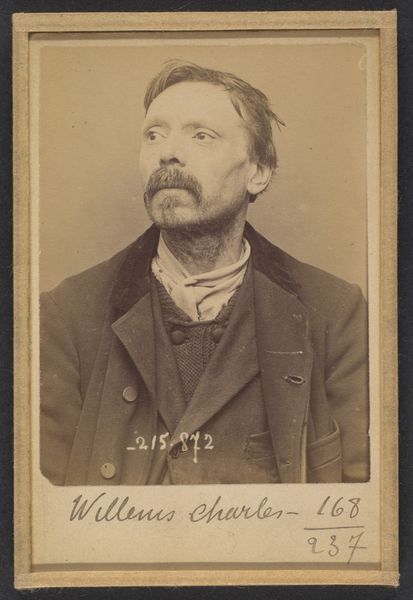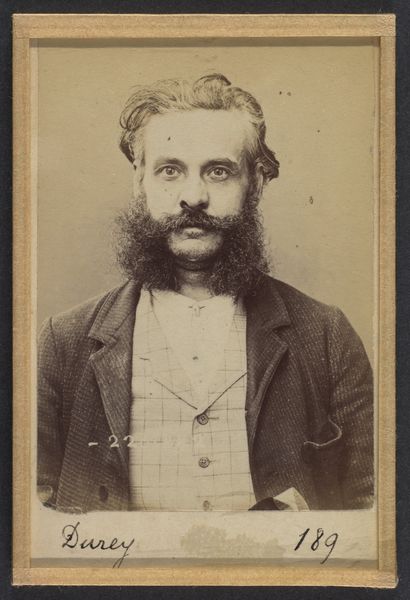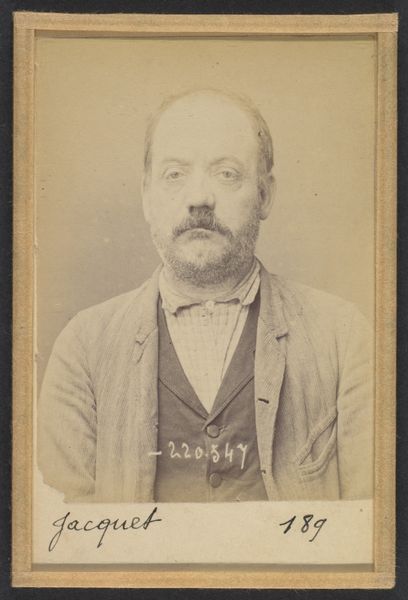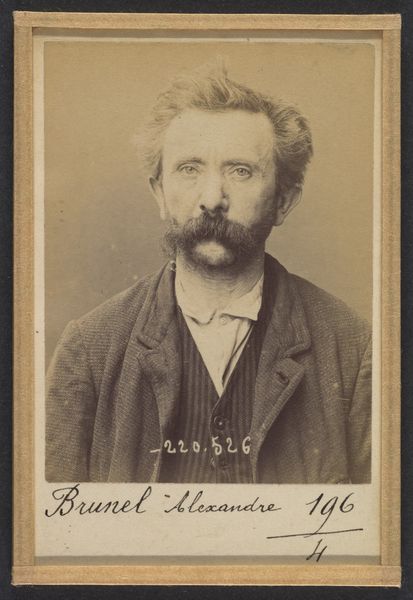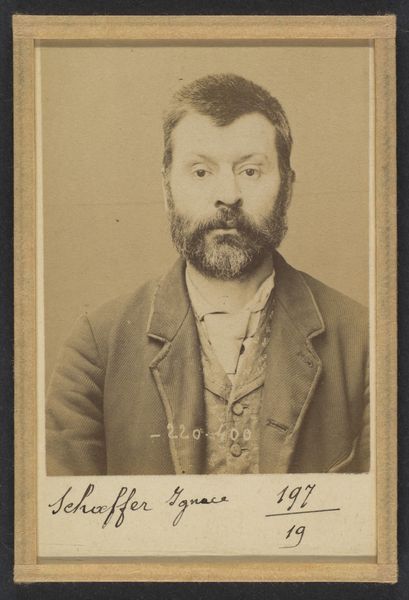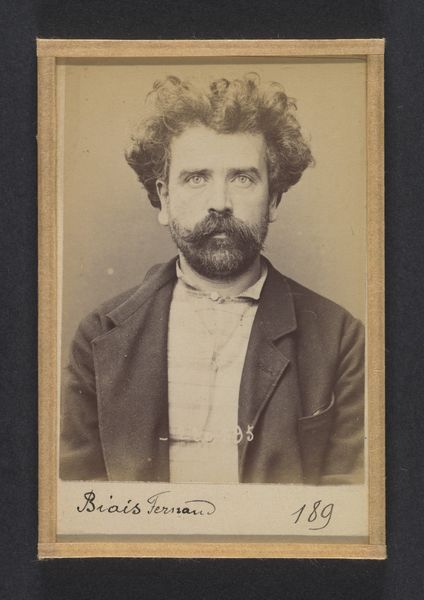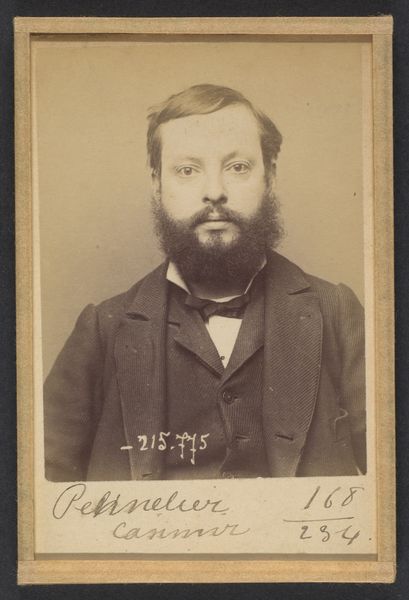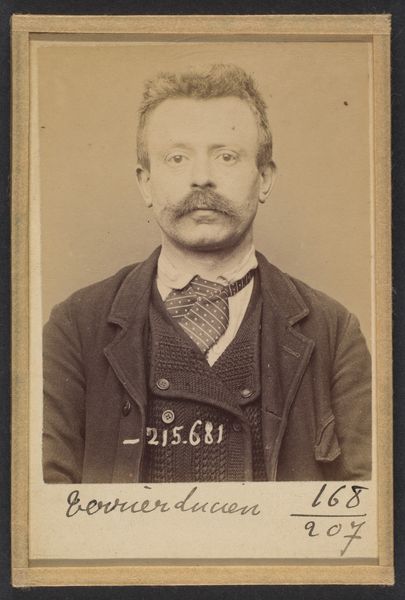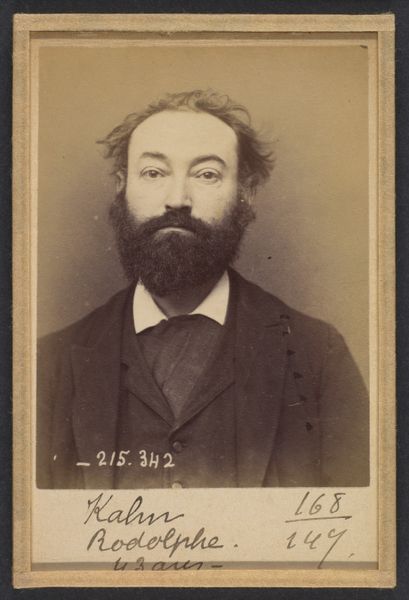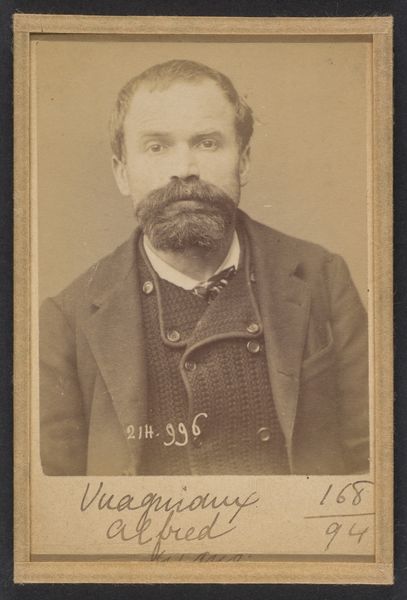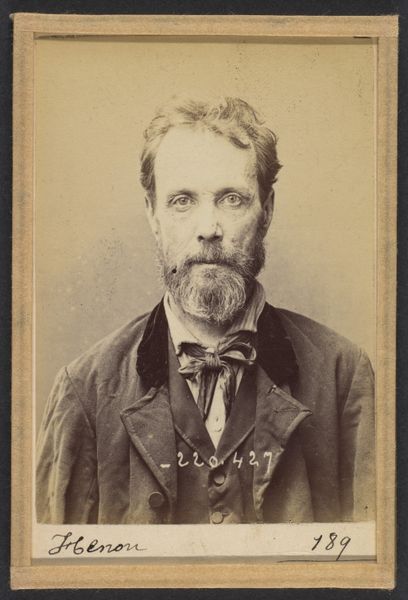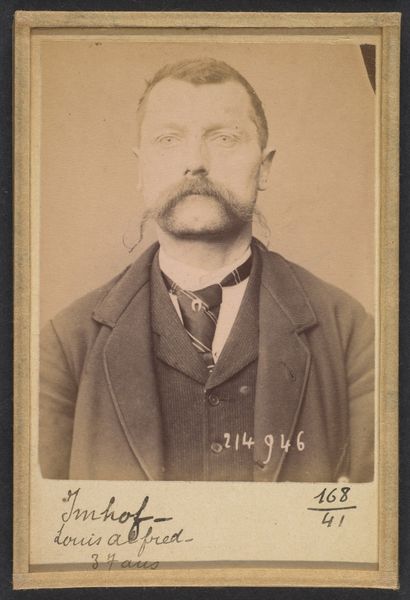
Ricois. Charles-Victor. 48 ans, né le 21/3/46 à Orléans. Employé au Journal Officiel. Anarchiste. 2/7/94. 1894
0:00
0:00
photography, gelatin-silver-print
#
portrait
#
photography
#
gelatin-silver-print
#
realism
Dimensions: 10.5 x 7 x 0.5 cm (4 1/8 x 2 3/4 x 3/16 in.) each
Copyright: Public Domain
Editor: This is "Ricois. Charles-Victor. 48 ans…," a gelatin silver print made in 1894 by Alphonse Bertillon. The details inscribed, particularly that he was an anarchist, suggest it’s more than just a simple portrait. How can we understand the purpose and cultural implications through its materiality? Curator: Exactly. Let's look at the gelatin silver print itself. It was a standardized, mass-producible medium. What does that suggest about the system Bertillon was operating within, one concerned with identifying and categorizing individuals? The banality of the medium underscores the mechanization of control. Editor: So the choice of photography, rather than say painting, speaks to a system of control? Curator: Precisely. Photography enabled reproducibility and standardization. Think about the labor involved: from the silver mining required for the print to the darkroom processing and the bureaucratic systems that supported it. Every step embodies power structures. Bertillon's mugshots are essentially tools of social management. Editor: It's chilling to think about. How the mass production of images connects directly to the control and, possibly, the suppression of individuals. Is there a connection with the aesthetics or Realism movement? Curator: The apparent "realism" is deceptive. Bertillon standardized poses and lighting, stripping the subject of individuality to fit a typology. Realism is employed to advance a form of social ordering, by presenting Ricois not as an individual but as an example of a dangerous type. Editor: So the art lies not in the subject, but in what the print itself signifies about the social environment in which it was created? It’s a raw and unforgiving representation of societal control through its very production. Curator: Precisely. By looking at the materials and their manipulation, we expose the hidden narratives of power.
Comments
No comments
Be the first to comment and join the conversation on the ultimate creative platform.
